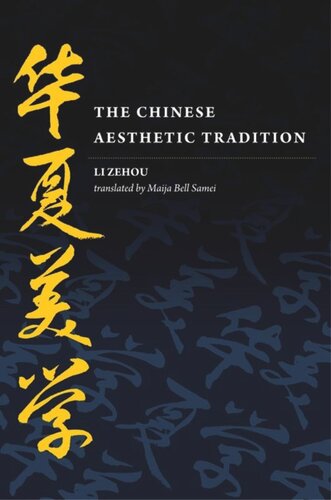

Most ebook files are in PDF format, so you can easily read them using various software such as Foxit Reader or directly on the Google Chrome browser.
Some ebook files are released by publishers in other formats such as .awz, .mobi, .epub, .fb2, etc. You may need to install specific software to read these formats on mobile/PC, such as Calibre.
Please read the tutorial at this link: https://ebookbell.com/faq
We offer FREE conversion to the popular formats you request; however, this may take some time. Therefore, right after payment, please email us, and we will try to provide the service as quickly as possible.
For some exceptional file formats or broken links (if any), please refrain from opening any disputes. Instead, email us first, and we will try to assist within a maximum of 6 hours.
EbookBell Team

5.0
40 reviewsLi Zehou (b. 1930) has been an influential thinker in China since the 1950s. Before moving to the U.S. in the wake of the Tiananmen Square protests of 1989, Li published works on Kant and traditional and contemporary Chinese philosophy. The present volume, a translation of his Huaxia meixue (1989), is considered among Li’s most significant works. Apart from its value as an introduction to the philosophy of one of contemporary China’s foremost intellectuals, The Chinese Aesthetic Tradition fills an important gap in the literature of Chinese aesthetics in English. It presents Li’s synthesis of the entire trajectory of Chinese aesthetic thought, from ancient times to the early modern period, incorporating pre-Confucian and Confucian ideas, Daoism, Chan Buddhism, and the influence of Western philosophy during the late-imperial period. As one of China’s As one of China's major contemporary philosophers and preeminent authority on Kant, Li is uniquely positioned to observe this trajectory and make it intelligible to today’s readers.
The Chinese Aesthetic Tradition touches on all areas of artistic activity, including poetry, painting, calligraphy, architecture, and the "art of living." Right government, the ideal human being, and the path to spiritual transcendence all come under the provenance of aesthetic thought. According to Li this was the case from early Confucian explanations of poetry as that which gives expression to intent, through Zhuangzi’s artistic depictions of the ideal personality who discerns the natural way of things and lives according to it, to Chan Buddhist-inspired notions that nature and words can come together to yield insight and enlightenment. In this enduring and stimulating work, Li demonstrates conclusively the fundamental role of aesthetics in the development of the cultural and psychological structures in Chinese culture that define "humanity."